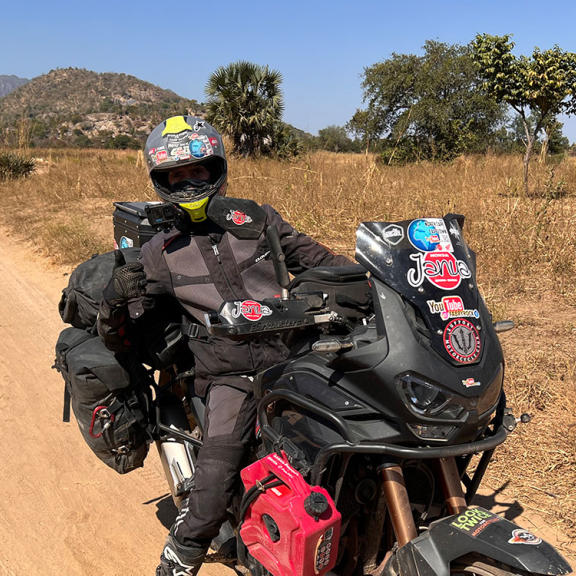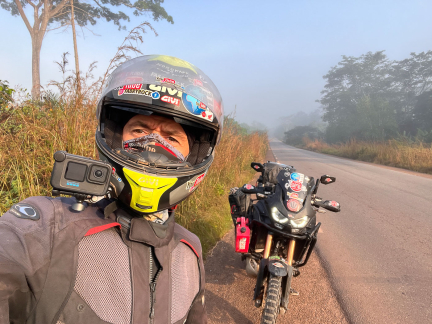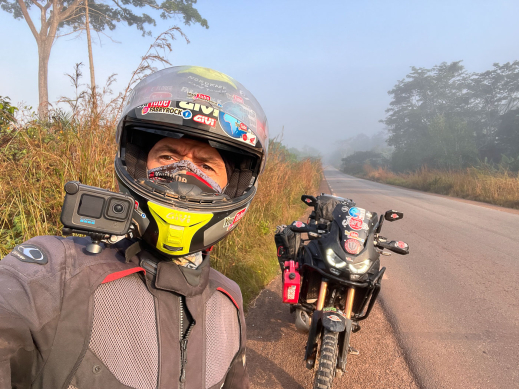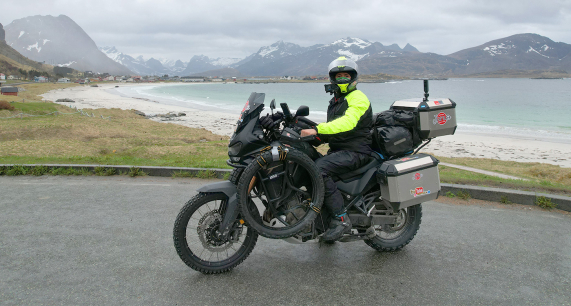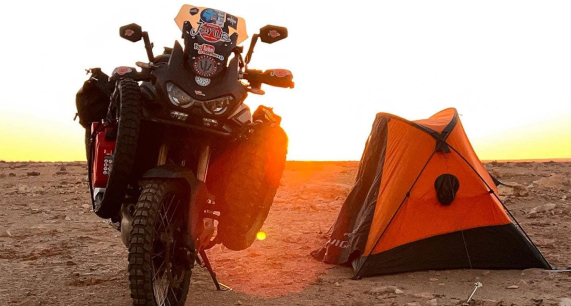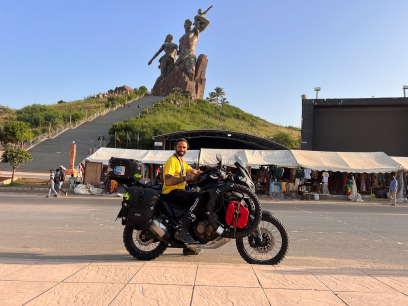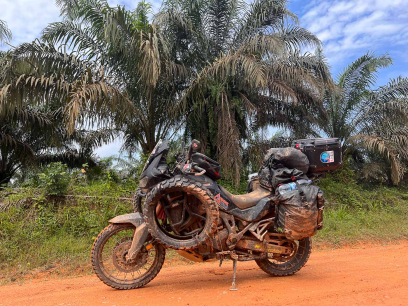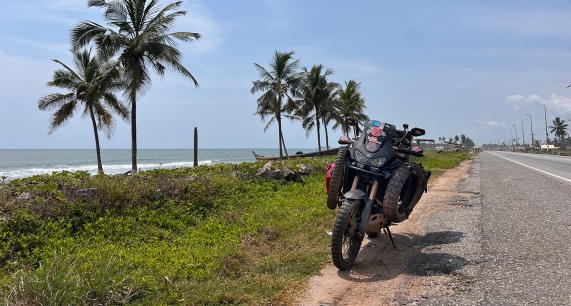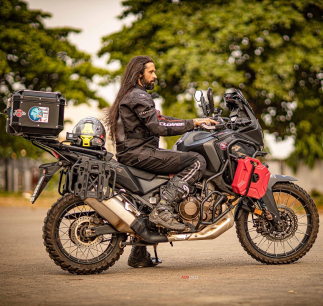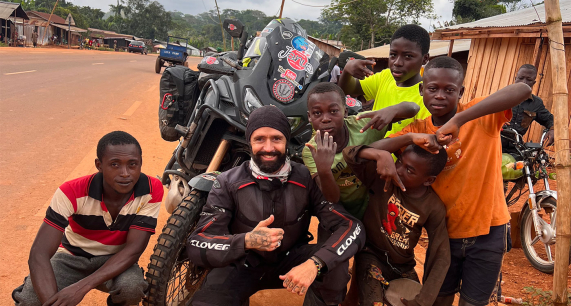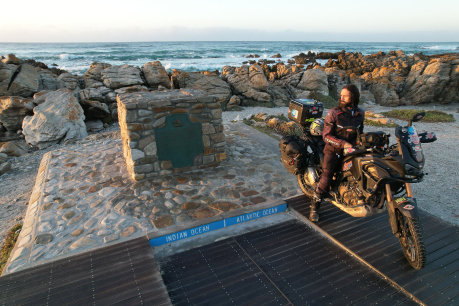Cameroon
Getting from Nigeria to Cameroon is, currently, the hardest crossing of the entire journey.
From Yola I make my way to Gurin, where my passport and carnet de passage are given exit stamps. This is a momentous event for the border officers, who have not stamped a carnet de passage since before Covid!
At immigration control in Beka, they do not stamp my entry to Cameroon but let me go ahead. After 100 km I reach a bridge in Djalingo, where my carnet de passage is given an entry stamp for Cameroon. With the customs officer’s permission, I set up my tent to sleep in the village, and am even invited to dine like a real Cameroonian.To get through Cameroon, I pay a local to help me find the right direction. In fact, there’s no real road here but merely a sandy trail — presenting serious complications, particularly for a motorcycle above 200 kg — passing through the Faro Reserve.
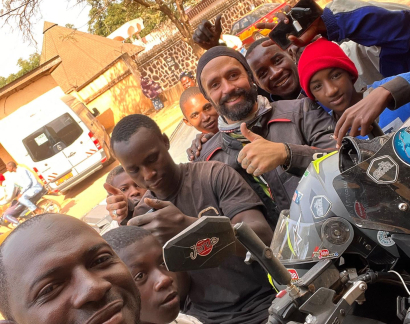
After crossing the Faro Reserve with difficulty, a moment of distraction sees me hit a very deep pothole full-on just at the point where I reach tarmac.
I immediately stop to inspect the motorcycle and notice at once that the rear rim has been damaged and the tyre is losing pressure! I pump up the rear tyre with the dented rim several times with my Bosch compressors, and manage to make it to a hotel in Ngaoundéré (after 150 km by road) by the skin of my teeth.
The next day I seek out a tyre shop and, having personally supervised and helped with the wheel removal, myself and the smith succeed in straightening out the rim without the need to change the air chamber.

